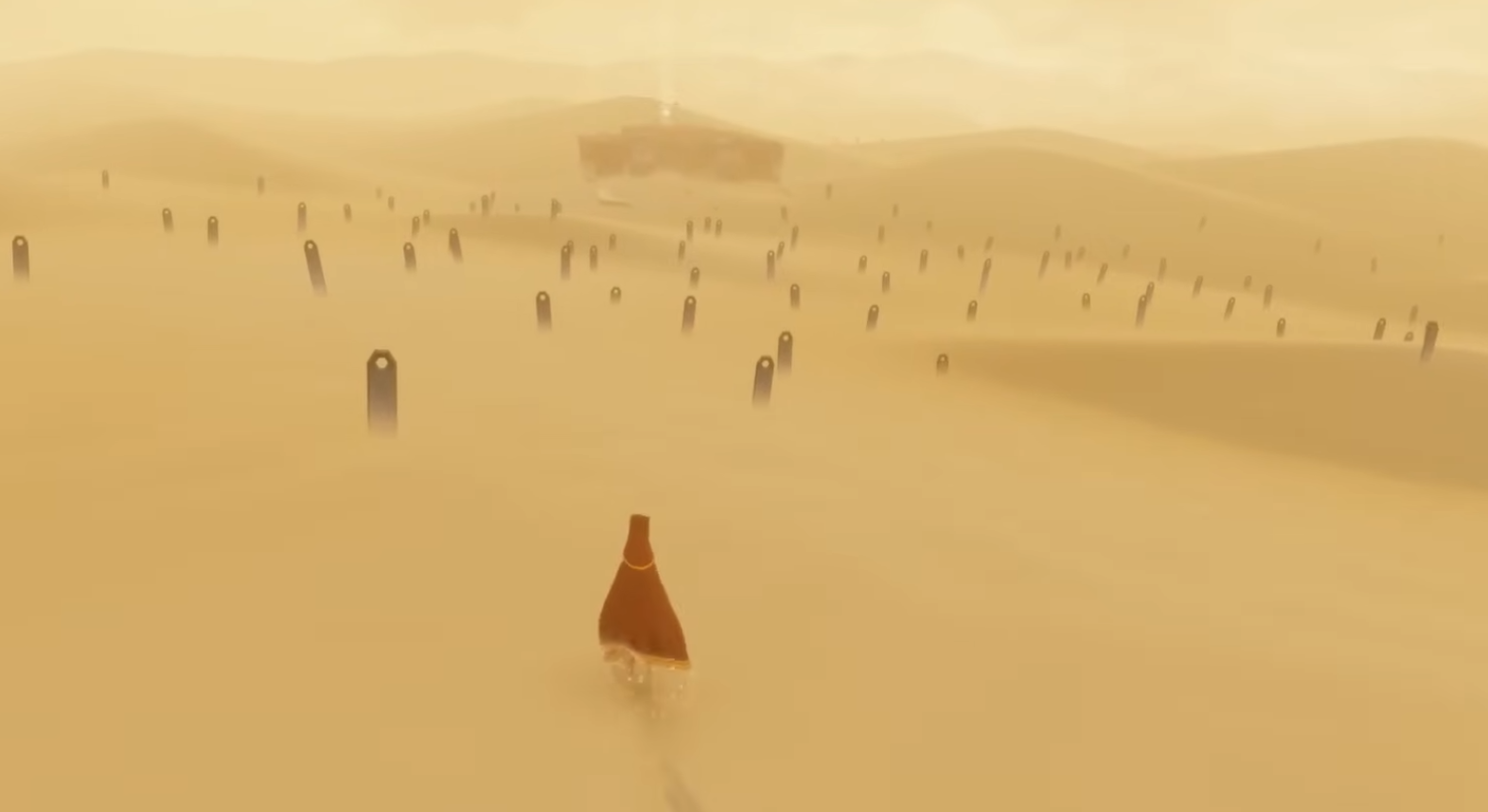Navigating the Visuals of "Journey": An In-Depth Look at Camera Dynamics

I also made a demo to recreate the camera control, feel free to download and check it out!
In the visually arresting game "Journey" by Thatgamecompany, camera control is not just a backdrop but a central player in shaping the player’s experience. This analysis delves into the specifics of how "Journey's" dynamic third-person camera elegantly balances player control with automated guidance to deliver a seamless narrative and aesthetic experience.
Dynamic Third-Person Camera: A Blend of Control and Automation
"Journey" utilizes a dynamic third-person camera that merges direct player input with automated movements based on specific rules. This hybrid approach allows for significant player agency while ensuring that the camera contributes effectively to storytelling. For instance, the camera incorporates a collider to prevent it from passing through large objects, like walls, ensuring the player's view remains unobstructed. This is particularly evident when the camera zooms in on the player character if an obstacle blocks the view, though it sometimes encounters clipping issues that can disrupt this smooth interaction (Mouse and Keyboard only).
Field of View: Scripted and Responsive Adjustments
The game’s field of view (FoV) is both responsive and scripted, changing to enhance dramatic sequences or player actions. For example, when players rotate the camera, the FoV gradually narrows, creating a focused effect that slowly reverts back once the camera movement stops. This dynamic change in FoV is pivotal in directing players' attention to specific game elements or vistas.
Aesthetic Intentions and Camera Guidance
The automatic movements of the camera are meticulously designed to always showcase "Journey's" stunning environments from the best angles. The camera often positions the player character off-center, usually to the left or right side of the screen, subtly guiding the player towards the open space, which is typically the direction to proceed. This positioning not only aids in navigation but also maintains aesthetic balance.
Camera Behavior on Terrain
The camera responds intelligently to changes in terrain, enhancing the player's immersion and emotional response. As players ascend a hill, the camera tilts to reveal the peak, and conversely, it zooms out during downhill slides to provide a grander view of the landscape, broadening the player’s perspective and enhancing the sensation of speed and scale.
Camera Settings and Sensitivity
"Journey" opts for slow camera movements, which are key in preventing motion sickness and preserving the game’s meditative feel. The sensitivity settings are non-linear, avoiding standard linear responsiveness for a smoother, albeit slower, camera movement. This choice, while enhancing the visual flow, can feel laggy to players accustomed to more responsive controls. This is particularly notable with mouse and keyboard inputs, where there is a distinct acceleration in mouse movements, adding to the camera’s fluidity but at the cost of direct control.
Conclusion
The camera in "Journey" does more than just record the player's actions—it shapes the way the game is experienced. From guiding players through the landscape to enhancing the emotional weight of the journey, the camera’s roles are as multifaceted as the game’s own sandswept dunes. Despite occasional technical glitches, it remains a profoundly effective tool in "Journey's" storytelling arsenal, ensuring that every scene is as visually compelling as it is narratively significant.